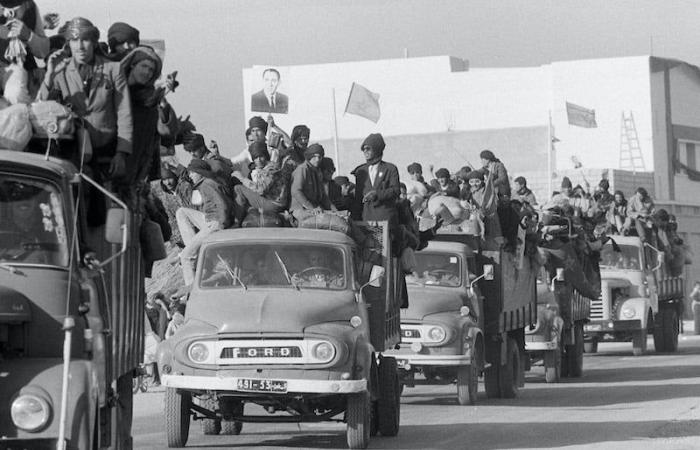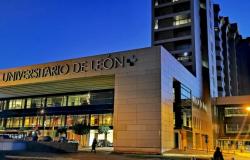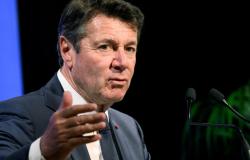On November 6, 1975, one of the greatest national epics in Morocco’s modern history, the Green March, was launched. This unique historical event embodied, in an unparalleled way, the unity of the Moroccan people and their cohesion with their leadership, and reflected the solid national will to recover the Moroccan Sahara in a peaceful and civilized manner.
The Green March was a strong message to the whole world, affirming Morocco’s historical right to its southern lands, and highlighting the Kingdom’s ability to mobilize its popular energies for the sake of its national issues. More than 350,000 Moroccan volunteers participated in this march, carrying with them the Qur’an and national flags, in a majestic scene that reflected the depth of the spiritual and national connection to the Moroccan desert.
In this context, the role of the residents of the Draa-Tafilalet region was particularly prominent, as they were among the first delegations to set foot on the Moroccan Sahara during this historic march. Many participants from this side, in identical statements to Hespress, expressed their pride and pride in this historic participation.
In his statement, Mohamed Ait Ouishi, one of the participants from the city of Errachidia, said, “I was twenty years old when I participated in the Green March. It was an indescribable feeling to be part of this historic event,” adding: “We all felt that we were performing a national duty.” “Holy.”
Ouaishi continued, in a statement to Hespress, that “the Green March was a defining moment in the history of Morocco. It demonstrated to the entire world the strength of Moroccan will and our ability to achieve our goals by peaceful means,” pointing out that the Green March was not just a passing event; Rather, it was a living embodiment of national unity and cohesion between the people and the throne.
The late King Hassan II led this initiative with wisdom and insight, based on broad popular support and national consensus on the issue of the Moroccan Sahara. Which made it a unique model in modern history for how to resolve regional conflicts peacefully. Morocco also succeeded in achieving its goal without shedding a single drop of blood. This reflects the wisdom of the Moroccan leadership and the civility of the Moroccan people.
The Green March was not just a military or political event; Rather, it was also an expression of the unified Moroccan identity, as citizens from various regions and social groups participated in it, which strengthened the feeling of national unity and common belonging.
Ahmed Benali, one of the participants from the city of Zagora, said: “We felt like we were part of a historical movement. We met Moroccans from all over the kingdom, and we felt the strength of the bonds that united us as one people.”
Benali added, in a statement to Hespress, that the Green March was a strong message to the international community, demonstrating Morocco’s ability to mobilize popular support for its national issues and manage its crises with wisdom and reason. This initiative succeeded in drawing the world’s attention to the justice of the Moroccan cause and the legitimacy of the Kingdom’s demands to recover its lands that were then colonized by Spain.
A number of researchers and those interested in the history of Morocco unanimously agreed that the Green March remains a shining milestone in Morocco’s modern history, reminding current and future generations of the strength of national will and the importance of unity in facing challenges, recalling the words of King Mohammed VI in his Green March speech last year, in which he said: “I spoke about… Seriousness, and about the spiritual, national and social values that distinguish the Moroccan nation, in a world of many fluctuations,” adding: “The Green March embodied these ancient values; The values of sacrifice, loyalty, and patriotism, which enabled Morocco to liberate its land and complete its sovereignty over it.”
Karim Igraz, a researcher interested in the history of the Moroccan Sahara, said that this unique national epic will remain a witness to Morocco’s ability to achieve the impossible when the people unite behind its leadership, and will remain a lesson in popular diplomacy and organized national action for generations to come.
Igraz added, in a statement to Hespress, that the Green March has left a profound impact on the political and social scenes in Morocco. It has strengthened the feeling of national unity and emphasized the centrality of the Sahara issue in the Moroccan conscience. It has also opened the door to a new phase of development and investment in the southern regions of the Kingdom.
Naima Bouazzaoui, an expert in economic development, says: “Since the Green March, the southern regions have witnessed a comprehensive development renaissance, as many major projects were launched in the fields of infrastructure, industry and tourism. “This contributed to improving the living conditions of the population and creating new job opportunities.”
The same spokeswoman added, in a statement to Hespress, that this development renaissance was not limited only to major projects; It also included strengthening education and health in these southern regions of the Kingdom of Morocco. New schools were opened and hospitals were equipped with the latest technologies, which raised the level of services provided to citizens.
The economic development expert pointed out that the efforts made in the field of technology and innovation have contributed to attracting foreign investments. Which led to the diversification of the local economy, highlighting that all these developments reflect the government’s commitment under the wise leadership of King Mohammed VI to achieve sustainable and comprehensive development in the southern provinces, which strengthens Morocco’s position as a model for development in the Moroccan Sahara.
At the international level, the Green March continues to arouse the interest of researchers and diplomats as a unique model in resolving regional conflicts.
In this regard, Omar Ait Al-Saghir, a research student in international relations, said, “The Green March represents an innovative model in popular diplomacy, as Morocco succeeded in achieving its national goals without resorting to violence or military confrontation.”
The Green March remains a bright milestone in the history of Morocco, reminding the world of the strength of the Moroccan popular will and the wisdom of the royal leadership of the late Hassan II and its inheritance by King Mohammed VI, as many statements on the subject confirm that the Green March is not just a memory to celebrate annually; Rather, it is a renewed spirit that inspires generations and pushes them towards more work and sacrifice for their country.
On the economic level, experts highlighted that the Green March was a starting point for comprehensive development in the southern regions. Jawad Badis, an economist, said: “Since the Green March, the southern regions have witnessed huge investments in infrastructure, industry and tourism,” pointing out that “this development has not It is limited to the economic aspect only; “But it also contributed to enhancing the social and cultural integration of these regions with the rest of the Kingdom.”






